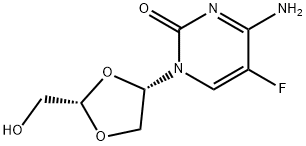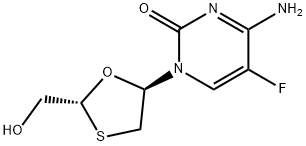Indigocarmine , 10mMinDMSO , 860-22-0
Synonym(s):
Acid Blue 74;Carmine Blue;Indigo Carmine;Indigo-5,5′-disulfonic acid disodium salt;Indigocarmine
CAS NO.:860-22-0
Empirical Formula: C16H11N2NaO8S2
Molecular Weight: 446.38
MDL number: MFCD00005723
EINECS: 212-728-8
| Pack Size | Price | Stock | Quantity |
| 1ml | RMB159.20 | In Stock |
|
| others | Enquire |
PRODUCT Properties
| Melting point: | >300°C |
| bulk density | 700-900kg/m3 |
| Density | 1.01 g/mL at 20 °C |
| refractive index | n20/D 1.335 |
| storage temp. | room temp |
| solubility | 1g/l |
| Colour Index | 73015 |
| form | Powder/Solid |
| color | Very dark blue to purple |
| PH | 7 (10g/l, H2O, 20℃) |
| PH Range | 11.5(blue)-14.0(yellow) |
| Odor | Light odour |
| Water Solubility | 1 g/100 mL (25 ºC) |
| Sensitive | Light Sensitive |
| λmax | 608nm |
| Merck | 14,4944 |
| BRN | 4103904 |
| Stability: | Stable. Incompatible with strong oxidizing agents. |
| Biological Applications | Detecting microorganisms; treating amyloidosis,testicular cancer; medical devices; drug delivery system |
| Major Application | Display device, sensor, chemical-mechanical polishing, batteries, photographic materials, thermoplastics, inks, highlighters, detergents, disinfectants, rodenticide, colored bubbles, hair dyes, cosmetics, food, determine bacterial growth, antiischemic Magents, antiseptic, antitumor agents, Alzheimer’s disease, psychoactive drugs, Tooth whitening |
| LogP | -3.57 |
| CAS DataBase Reference | 860-22-0(CAS DataBase Reference) |
| EPA Substance Registry System | C.I. Acid Blue 74 (860-22-0) |
Description and Uses
Indigo carmine is indigotindisulfonate sodium, a marker dye used during cystoscopy and ureteral catheterization.
(1) Indigo carmine is also used in endoscopic procedures, lymph node and vessel delineation, and for tumor localization. Indigo carmine is an unapproved drug without FDA approved labeling.
(2) There is no single dye that can replace indigo carmine. Choice of alternative agent will depend on type of procedure and physician discretion, as well as product availability.
Indigo Carmine (IC) is the most common chemical dye for clothes dyeing, which is considered as a refractory molecule since it is required a rather strong chemical treatment for its elimination from the water waste. The presence of this dye in residuals causes notorious change of water color and smell even in very low concentration. Moreover, if some of this water reaches natural streams it can be toxic for aquatic living entities due to the formation of toxic compounds such as aromatic amines.
Indigo Carmine (FD&C Blue #2) is a colorant. It has poor ph stability in that after 1 week at ph 3 and 5 it will appreciably fade, at ph 7 considerably fade, and at ph 8 fade completely. It is the least soluble of all food colors, with a solubility of 1.6 g in 100 ml of water at 25°c. Complete fading occurs in alkalis such as 10% sodium carbonate and 10% sodium hydroxide, with fading also occurring in 10% sugar systems. It has very poor light stability and oxidation stability, and moderate stability to heat; it has a deep blue hue with poor tinctorial strength. It is the only food color that has good resistance to reducing agents, but has very poor compatibility with food components. The major use is in pet food, but it is also used in candies, confections, and baked goods. The common name is indigotine.
Safety
| Symbol(GHS) |  GHS07 |
| Signal word | Warning |
| Hazard statements | H317 |
| Precautionary statements | P261-P272-P280-P302+P352-P333+P313-P362+P364 |
| Hazard Codes | Xn,Xi |
| Risk Statements | 22-36/37/38 |
| Safety Statements | 22-24/25-36/37/39-27-26 |
| WGK Germany | 3 |
| RTECS | DU3000000 |
| TSCA | Yes |
| HS Code | 32041200 |
| Hazardous Substances Data | 860-22-0(Hazardous Substances Data) |
| Toxicity | LD50 orally in Rabbit: > 2000 mg/kg |

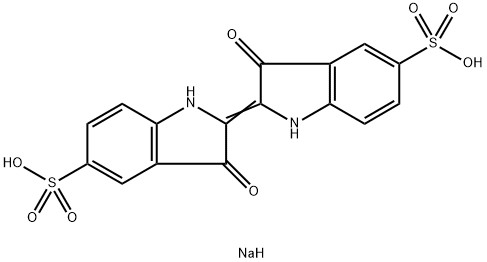
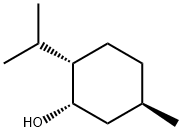
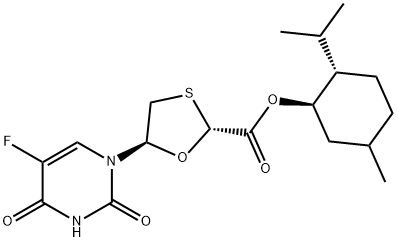
![(2S)-2-[[[(1,1-Dimethylethyl)diphenylsilyl]oxy]methyl]-1,3-oxathiolan-5-ol 5-Acetate](https://img.chemicalbook.com/CAS/20180601/GIF/202532-88-5.gif)
